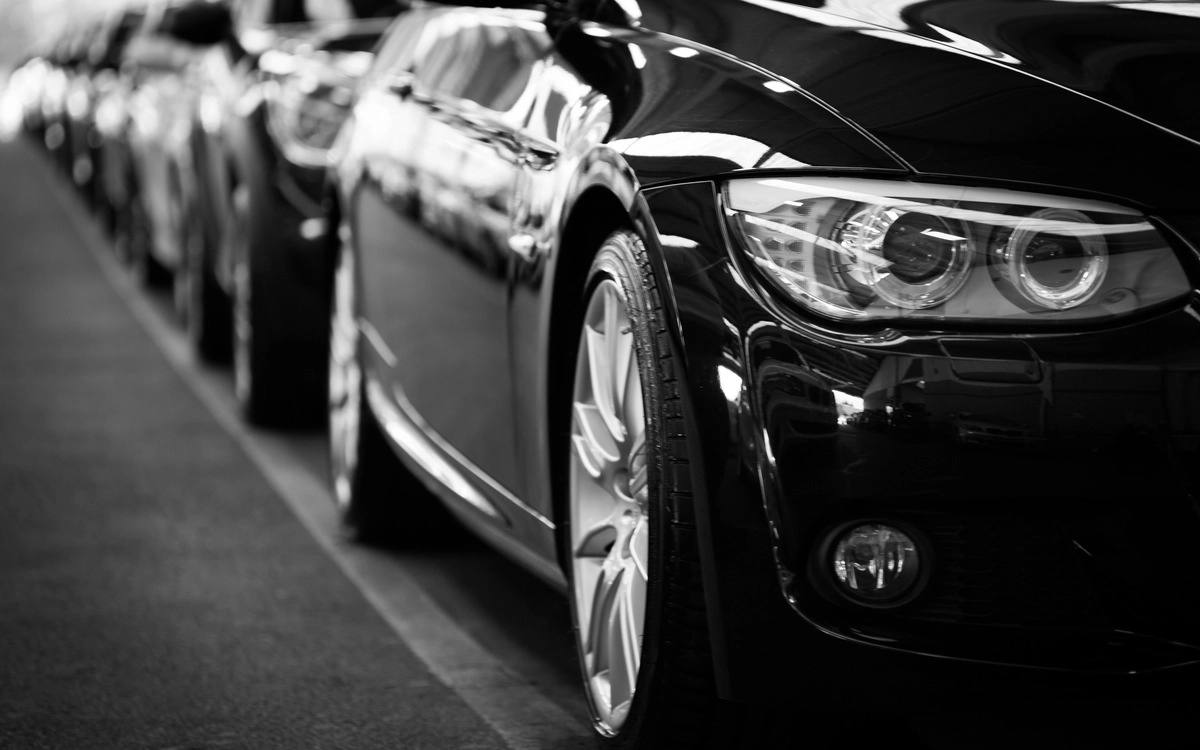How cars are painted on the production line
In 1886, Carl Benz applied for a patent for the Benz Patent Motorwagen, his three-wheeled ‘vehicle powered by a gas engine’. However, it wasn’t until 1908 that the first mass produced car - the Ford Model T - was launched.
These early models weren’t nicknamed ‘horseless carriages’ for nothing. They had relatively little car paint on them - no bonnet, no roof...It wasn’t until the 1920s that the move towards mass production drove new technology to create better paint processes and finishes.
Here’s a short, whistlestop tour through the history of how cars are painted. Imagine you’re in a Bugatti Chiron Super Sport. Don’t blink.

How the first cars were painted
Early car production lines were static and mass production was manual and laborious. Henry Ford was in the driving seat of efficiency and created the world’s first moving production line in 1913.
This speeded up the building of a car from start to finish. In fact, Ford’s moving assembly line was so effective that literally waiting for the paint to dry was holding things back. As most other parts of the build had been tweaked and optimised, attention now turned to optimising the paint composition and paint processes.
In the meantime though, Ford used Japan Black as the main car paint colour, as it was believed to be the fastest drying paint.
Early paint processes in the 1920s and 1930s
The first cars were painted by hand. Layers of oil-based paint - more like a varnish or enamel - were built up, with careful sanding in between layers. Finally, the top coat was polished. This process took weeks of manual labour with long drying times between.
Car manufacturers experimented with different types of paint composition and application processes. They employed various techniques - like immersion or ‘dipping’ for complete coverage and a smooth finish. Someone invented spray paint equipment and the DuPont chemical company created a more durable, quick drying nitrocellulose-based car paint they called Duco.
Nitrocellulose car paint
This nitrocellulose base, combined with spray equipment that gave a thinner coating and more even finish, reduced the amount of time needed for the paint to dry. Painting cars was still very manual work though and, because the early car paints weren’t high gloss like modern ones, there was still a lot of hand polishing involved.
Meanwhile, alkyd (oil based) enamels were also evolving. Both types had a wider range of colours than black, but were still nothing like as robust, colour-fast and protective as the car paints of today.
You can’t buy nitrocellulose-based or alkyd enamel paint anymore, but we do supply a very convincing nitro-synthetic modern car paint for classic cars.
The paint innovations of the 60s and 1970s
Car paint technology and spray paint methods continued to evolve. The enamels were more glossy than before and oven-baked to provide a harder, more resilient protective shell on the car.
Incredibly, the paint was still being applied manually, which meant some layers might be thicker or uneven. Rather than spray paint, some manufacturers preferred to dip. However, this wasn’t popular as there were safety issues (fire risk) and environmental hazards.
Thanks to the new spray paint technology, wet-on-wet paint processes came to the fore during this time, which sped things up considerably. This is where a new car paint layer can be applied before the first has fully dried.
In addition, spray painting equipment kept pace with the creation of more sophisticated paint composition - even to the point where spray painting metallics and pearlescent paints wasn't an issue.
Why could they be an issue? Because special effect car paints are pearlescent ‘3 stage paints’ formulated with metallic flakes or particles that create the depth, sparkle and colour change.
Computer-controlled robot car spray paint
Professional car spray painting by hand is a Dark Art practiced in bodyshops all across the world. However, when cars roll off the production line, they are spray painted by machine using a wet-on-wet method. It’s a standardised, automated process that’s designed to achieve exactly the same results every single time.
Modern Automotive Coating Processes
Henry Ford’s moving conveyor production line is still in operation to this day. The car shell - the empty upper body minus the chassis, moves along the line through all these stages.
- Preparation - the car shell is cleaned and a micro-thin layer of anti-corrosion protection (electrodeposition coating) is applied and also a phosphorus layer to provide a key for the primer. Dip tanks are used and these protective layers are baked dry and hard.
- Sealers - the panels of the car are sealed manually (for example, with PVC sealer) to make the car shell water tight.
- Primer - this substrate layer promotes adhesion between the surface and the basecoat; primer also imparts a smoother surface for subsequent layers and has anti-chip properties. The primer is also baked.
- Topcoats - 2 or 3 coats of the coloured car paint are applied by robots.
- Lacquer - 1 or 2 coats of gloss lacquer are sprayed for a protective finish that is anti-scratch and resistant to the effects of grime and weathering. Once this is completed, the shell is baked again and is ready for fitting onto the chassis.
How to order your car touch-up paint
No car stays scratch and chip free forever, unfortunately! A precision car touch-up paint pen, bottle or aerosol spray paint is easy to use to fix and blend in damaged paintwork.
To order, simply enter your paint code or your car reg into our search tool and follow the instructions.



